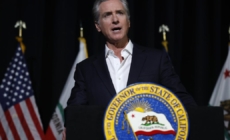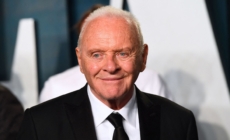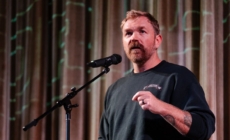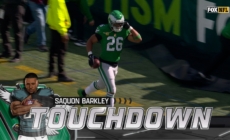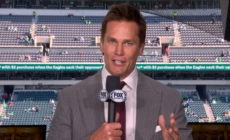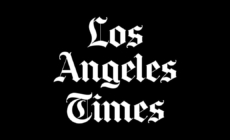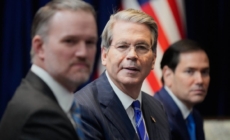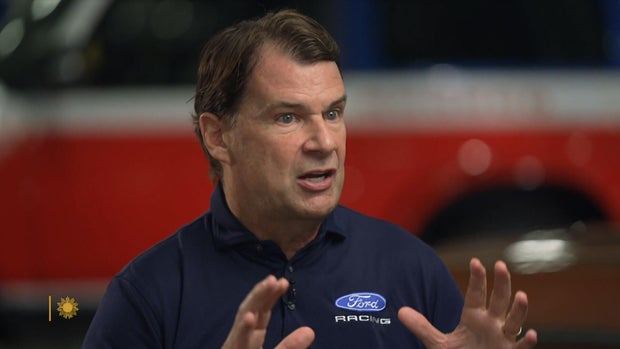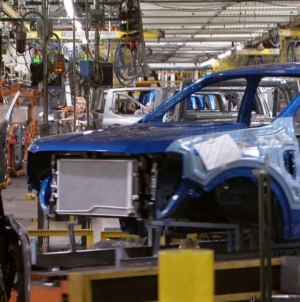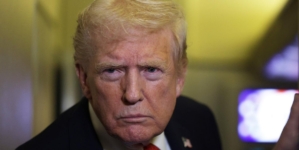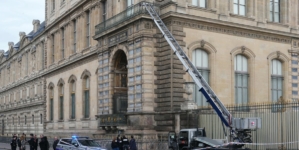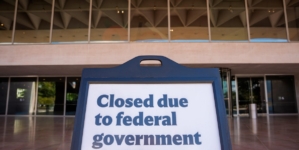-
Newsom, Harris both considering runs for president in 2028 - 12 mins ago
-
Anthony Hopkins reveals epiphany that ended his drinking 50 years ago - 14 mins ago
-
Daniel Cormier Reveals Backstage Details on Tom Aspinall’s Injury After UFC 321 - 19 mins ago
-
Giants' Jaxson Dart connects with Cam Skattebo for 18-yard TD, tying game vs. Eagles | NFL Highlights - 43 mins ago
-
Wild bear visits Sequoia Park Zoo in California, delights staff members - 50 mins ago
-
Most Young Democrats Still Back Graham Platner Despite ‘Nazi’ Tattoo: Poll - 58 mins ago
-
Saquon Barkley rushes for 65-yard TD, giving Eagles early lead over Giants | NFL Highlights - about 1 hour ago
-
Chinese Nationals Held in Georgia Over $400K Black-Market Uranium Plot - 2 hours ago
-
Tom Brady gives advice to Aaron Rodgers playing Packers & why he’s IMPRESSED with Jaxson Dart - 2 hours ago
-
Police arrest two suspects in fatal shooting of California strip club manager - 2 hours ago
CEO Jim Farley on steering Ford through Trump’s tariffs
At Ford’s Michigan Assembly outside Detroit, more than 4,500 hourly employees turn out about 100,000 Broncos a year – a new one every 60 seconds.
For obvious reasons Ford’s been touting its commitment to American manufacturing. It advertises itself as employing the most hourly workers in the country – and more than 80 percent of its vehicles sold in the U.S. are indeed made in America. That’s the highest share of any Detroit automaker.
But Ford imports many parts, and has been hit hard by President Trump’s tariffs. Ford CEO Jim Farley says it’s not affordable to make all the parts here, and that if Ford only used American-made parts, American-made cars would be too expensive for many Americans to buy.
And there are some components, Farley says, that no one even makes in America: “There are parts, fasteners, wiring looms from other countries. And we pay our tariffs, sometimes up to 70 percent on those parts. That’s giving us a $2 billion bill. About 20 percent of our global profit is going away in tariffs.”
And who is paying for those tariffs? “Well, the company right now,” he said. “And in the end of the day, it’s all these workers.”
CBS News
Farley has deep roots in Michigan. His grandfather was Ford Motor Company’s 389th employee – one of the first to help build the Model T. But Farley himself is not a Ford lifer. Before joining the company in 2007, he spent nearly two decades at Toyota.
And how did that go over in the Farley family when he went to Toyota? “Not well,” Jim laughed. “Because at the time, you know, they were just, all through the ’70s, there was just job loss after job loss across southeast Michigan. And my grandfather was thinking about all the people that lost their jobs. And they were like, Why? Why are you doing this?“
I asked, “Do you see similarities between the ’80s, when the U.S. auto industry was facing the increased competition from Japan, to today where it’s China?”
“Oh, I think it’s exactly the same thing, but it’s on steroids,” Farley replied.
“A completely different level of risk for our industry”
Ironically, it’s a Biden-era tariff that has so far spared Detroit from that competition. In May of last year, the U.S. imposed a 100% surcharge on Chinese-made electric vehicles, which effectively bans them from the American road. But Chinese EVs are gaining ground in Europe, Latin America, and especially China, the world’s largest market.
Farley has called these small, inexpensive, tech-savvy cars an existential threat. “They have enough capacity in China with existing factories to serve the entire North American market, put us all out of business,” he said. “Japan never had that. So, this is a completely different level of risk for our industry.”
“Are the Chinese cars being made today something Americans would want to buy?” I asked.
“Yes,” said Farley. “I drive a Xiaomi SU7. High quality, great digital experience.”
“You’re driving a Chinese car? Why?”
“Because of the competition. And to beat them, you have to know them.”
Farley’s firsthand experience with Chinese EVs is a big reason Ford is pivoting to smaller, more affordable electric vehicles. This past summer, in announcing production of a new midsize electric pickup truck to sell for $30,000, Farley said, “It represents the most radical change on how we design and how we build vehicles at Ford since the Model T.”
That hands-on approach is one holdover from his days at Toyota. Another is his annual road trip to see his products in action. “I believe in genchi genbutsu. It’s a Japanese word that means ‘go and see where the work is actually done.’ I took a Lightning through California with my son. And it became pretty clear that we had a big problem with our charging network. So, after that trip, I called Elon [Musk]. Out of the blue, never met him or anything. I was like, is there any way you would share your supercharging network with Ford?”
CBS News
If you heard his name and noticed the resemblance to the late actor Chris Farley, you weren’t wrong: the “Saturday Night Live” star was Jim Farley’s cousin. “I think there’s, uh, a little bit of kid in all of us Farleys, a little bit of that kind of devilish, little snarky tomfoolery,” he said. “On the other hand, I would say I was, you know, kind of on the pretty serious side of the Farley spectrum!”
Jim Farley will need every bit of that serious side to steer Ford through one of its biggest economic and political tests in decades – building a future that keeps tens of thousands of American auto workers on the line. “What I care about is that transformation of Ford,” he said. “I’d like to be able to come back here in 20 years, if I’m still alive, and see all the people, that they’re still busy, like my grandfather. My grandfather had nothing until he had the Ford job. Our jobs as leaders are about them.”
For more info:
Story produced by Mark Hudspeth. Editor: Chad Cardin.
